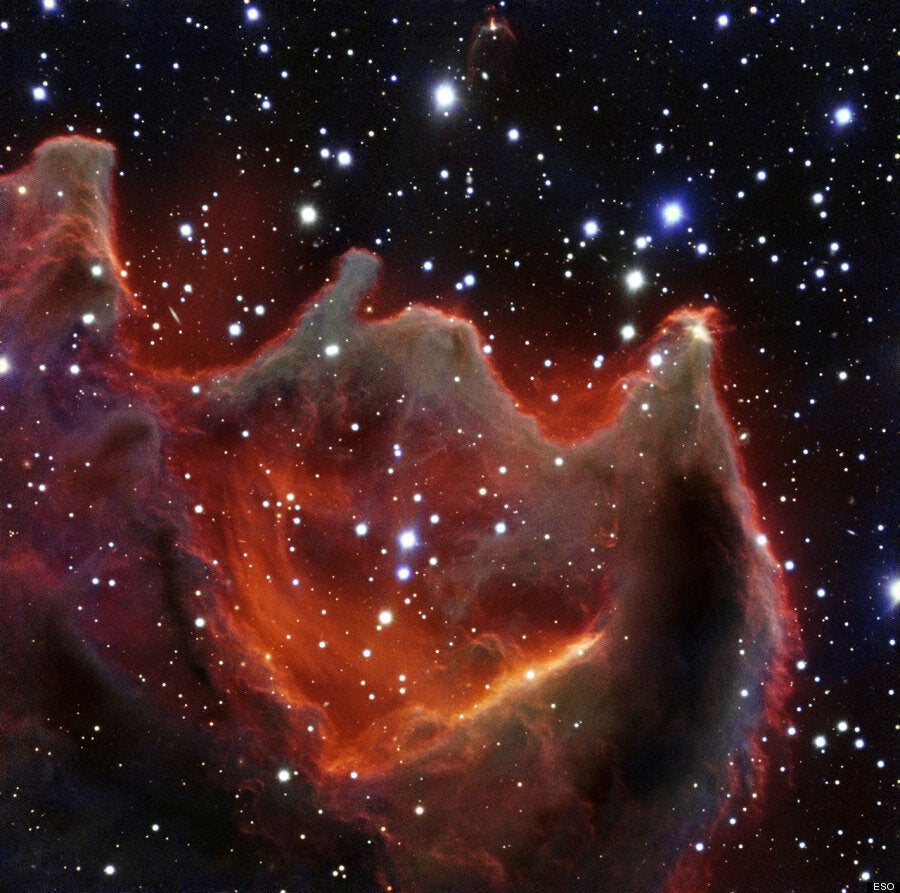There is a tradition in astronomy and space photography of over-promising with the names of stuff. Take the Horsehead Nebula (not a horse) and the Eye of God (not God). And don't get us started on the constellations. Ursa Major might look like a bear to you, ancient astronomers - but we don't remember bears having tails.
On the other hand, sometimes these ridiculous names just help us feel like we understand things that are almost unknowably weird. Take the cometary globule CG4, aka The Mouth of The Beast. This undeniably beautiful (though in reality very faint) feature of space is both gorgeous and totally mysterious.
The European Southern Observatory, who have just released this new photo of the Beast taken with their Very Large Telescope, say we don't know much more about what CG4 is except that it's gorgeous.
"The head of CG4, which is the part visible on this image and resembles the head of the gigantic beast, has a diameter of 1.5 light-years. The tail of the globule — which extends downwards and is not visible in the image — is about eight light-years long. By astronomical standards this makes it a comparatively small cloud...
Why CG4 and other cometary globules have their distinct form is still a matter of debate among astronomers and two theories have developed. Cometary globules, and therefore also CG4, could originally have been spherical nebulae, which were disrupted and acquired their new, unusual form because of the effects of a nearby supernova explosion. Other astronomers suggest, that cometary globules are shaped by stellar winds and ionising radiation from hot, massive OB stars. These effects could first lead to the bizarrely (but appropriately!) named formations known as elephant trunks and then eventually cometary globules."
